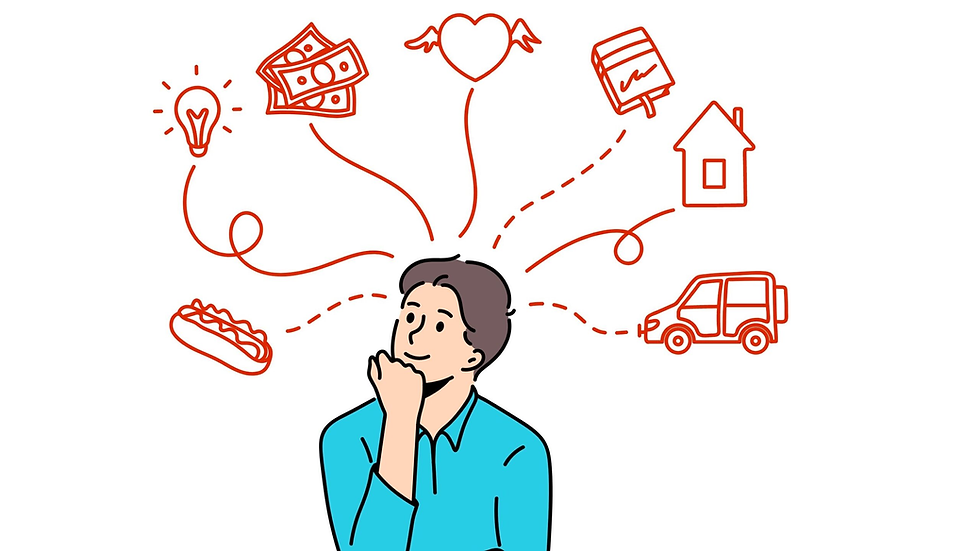The Power of Samatha Meditation: How CEOs Can Harness its Benefits.
- Htay Aung
- Jun 5, 2023
- 3 min read

CEOs, at the helm of their organizations, face immense pressure and responsibility. The demanding nature of their roles often leads to elevated stress levels, affecting their well-being and overall effectiveness. In their pursuit of balance and resilience, many CEOs are turning to ancient practices such as Samatha Meditation to find solace and relief from stress. In this article, we explore how Samatha Meditation can serve as a powerful tool for CEOs to manage stress, cultivate inner peace, and enhance their leadership capabilities.
Samatha Meditation, also known as tranquillity or calm-abiding meditation, is a technique that focuses on developing a calm, stable, and focused mind. It involves directing attention to a single object, such as the breath or a mantra, while gently letting go of distracting thoughts. Through consistent practice, Samatha Meditation cultivates mental clarity, tranquillity, and a deep sense of relaxation.
Stress Reduction
CEOs often operate in high-pressure environments, leading to chronic stress that can negatively impact their physical and mental well-being. Regular practice of Samatha Meditation offers CEOs a respite from the daily demands, allowing them to unwind, release tension, and reset their nervous system. By consciously redirecting their attention to the present moment and observing their breath, CEOs can experience a profound relaxation response, alleviating stress and fostering a sense of calm.
Increased Self-Awareness:
Effective stress management starts with self-awareness. Samatha Meditation helps CEOs develop a heightened sense of self-awareness by encouraging them to observe their thoughts, emotions, and physical sensations without judgment. This introspective practice allows CEOs to identify stress triggers, understand their reactions, and cultivate a greater sense of self-control. By becoming more aware of their stress patterns, CEOs can implement proactive strategies to manage stress before it becomes overwhelming.
Enhanced Focus and Productivity:
Stress often hampers CEOs' ability to concentrate and make clear decisions. Samatha Meditation improves focus and attention span, enabling CEOs to engage fully in the present moment and enhance their productivity. By training the mind to remain anchored on a chosen object of meditation, CEOs develop the capacity to sustain concentration amidst distractions, leading to more efficient and effective decision-making processes.
Emotional Regulation:
CEOs must navigate a myriad of emotions in their professional lives, from dealing with challenging situations to leading teams through periods of uncertainty. Samatha Meditation promotes emotional regulation by creating a space for CEOs to observe and acknowledge their emotions without getting carried away by them. This practice cultivates a sense of equanimity and allows CEOs to respond to emotionally charged situations with composure and wisdom, fostering healthier relationships and conflict resolution within the organization.
Resilience and Well-being:
Maintaining resilience is crucial for CEOs to thrive in demanding roles. Samatha Meditation equips CEOs with the tools to bounce back from setbacks and adapt to change with greater ease. By developing inner resilience, CEOs can navigate challenges with grace, maintain their well-being, and inspire their teams to do the same. The regular practice fosters a deep sense of well-being, enabling CEOs to approach their work with renewed energy and a positive outlook.
Incorporating Samatha Meditation into their daily routines can empower CEOs to effectively manage stress, cultivate inner peace, and enhance their leadership capabilities. By investing time in this ancient practice, CEOs can develop the mental clarity, emotional regulation, and resilience necessary to navigate the challenges of their roles with grace. As they prioritize their well-being and find solace through Samatha Meditation, CEOs will not only thrive personally but also foster a culture of well-being within their organizations.
Editor Htay Aung (Theo)
.png)




Comments